Overwatch's changing heroes reflect the spiritual battle at the game's heart
Character design is essential to Overwatch's evolving appeal.
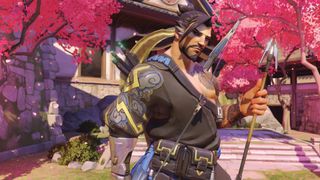
This article was originally published in PC Gamer issue 322. For more quality articles about all things PC gaming, you can subscribe now in the UK and the US.
If you’ve spent any time at all in Overwatch, you’ll be familiar with the infamy of Hanzo. A sulky archer once equipped with Scatter Arrows that burst into ricocheting shards, the character became a byword for obstinate lone wolves who prioritise kills over victory. “I would pretty consistently catch some flak for playing him in competitive,” comments Jared, an erstwhile Team Fortress 2 tournament player who now plays Overwatch at Master rank. “I find it kinda hard to get in the zone when someone is whining about my hero choice, so I was pretty liberal with the mute button, which definitely played into the Hanzo main stereotype.”
Despite this negativity, Jared fell in love with Hanzo’s ability to assassinate foes in cover and terrorise bunchedup teams from high ground. Lately, though, he hasn’t been finding Hanzo much fun. The character is one of several heroes who have undergone total reworks, gaining a new aerial dash that gives him an edge in duels, and trading Scatter Arrows for a more conventional rapid-firing Storm Arrows ability. Jared feels the changes have made Hanzo more effective, but also spoiled his charm. “His rework pretty much only addressed his weaknesses and made his strengths only better, which has led to the unthinkable—people actually ask for a Hanzo now!”
The problem of balance versus a hero’s flavour is one Overwatch at large is struggling with, and there are far-reaching implications for the game’s competitive culture. According to David Sirlin, a veteran multiplayer designer whose credits include two Street Fighter games, this is a dilemma every character-led PvP game runs into eventually. When designing rosters for such titles he says, “You basically want as many personality types covered as you can, so that players will find someone that clicks with them.” The more diverse your roster, however, the harder it is to balance. And the more emphasis you place on balancing characters against the rest, the greater the risk of destroying what makes them distinctive and appealing. “You’ll likely end up with something like a huge guy made of rock who has hardly any hit points, so he doesn’t really feel like a big rock guy anymore. But he’s fair!”
All the rage
Overwatch is an intriguing case because its range of personalities and playstyles is so vast—from time-rewinding Cockneys and orb-tossing monks to a cuddly Satan with an icegun. This breadth has roped in players who wouldn’t usually dabble with competitive shooters. For Nicole Westbrook Smith, a graphic designer and cosplayer who streams as nweatherservice, it was an opportunity to switch genres after years of WoW. “I had been looking forward to [Blizzard’s cancelled MMO] Titan, but I love that they morphed it into an FPS because I’d always been interested in playing one. Counter-Strike was not my jam.”
David Eddy—a platinum rank D.Va main—came to the game after friends compared it to Nintendo’s Splatoon. “It didn’t feel like a normal shooter,” he says. “It wasn’t loaded with blood and killing and very serious-looking characters. It was one of the first shooters I thought was approachable to people who didn’t exclusively play shooters.”
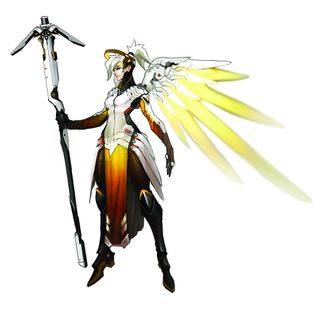
Many of Overwatch’s hero balancing updates have been welcomed, but there are a few that recall Sirlin’s example of the huge rock guy with hardly any hit points. Part of the problem here is that balance is not some objective truth to be pursued. It arises from how developers define skill and success to players, and the expectations about the validity of certain approaches those players bring with them, based on their exposure to other games. Balancing a game thus helps shape who the game appears to be for, whose criteria of skill takes precedence, It’s a conceptual tug-of-war that extends from the development team and playerbase into the realms of people who might pick up or return to the game if certain changes are made.
The biggest gaming news, reviews and hardware deals
Keep up to date with the most important stories and the best deals, as picked by the PC Gamer team.
Overwatch’s breadth of styles has created many conflicting interpretations of ‘skill’. Its balancing updates thus tap into the heart of broader underlying ideological differences within the PvP community. In particular, the game has been both praised and slammed for how it diverges from a narrower vision of the FPS as being primarily about accuracy and manual dexterity. That consideration hinges on the presence of heroes with autoaiming weapons or whose role isn’t really built around kills.
These characters are often branded ‘low skill’ by traditionalists who express prowess in terms of streaks and headshots, but others love them precisely for how they transcend that concept of the shooter, while making Overwatch more accessible to players with disabilities who might struggle to aim a cursor. Recent reworks suggest, however, that Blizzard is giving ground to that older notion of a shooter, potentially alienating portions of its audience as it manages what has become a flourishing esport.
Take Symmetra, the builder/DPS hero whose now-retired ‘2.0’ skillset was derided as underpowered, overpowered or simply a headache to play around. Armed with deployable turrets, a flying barrier, an autoaiming gun with manual secondary fire and the choice of a teleporter or shield generator as her ultimate ability, the older Symmetra certainly took some unravelling. But master rank Symmetra main Togrias argues that she was valuable precisely because she was so ambiguous, able to perform many roles at once—placing turrets to catch out infiltrators when holding a point, for example, or using her flying shield to lead the charge on a position.
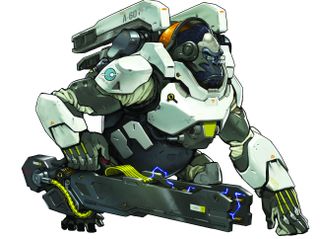
Her choice of ultimates helped “change the flow of the game and add variety to an otherwise stale meta”, he says, as opposing teams had to decide whether to sabotage the ultimate itself or deal with its effects. The new Symmetra, by contrast, is a more inflexible, “flashy” creation, her ultimates swapped for a gigantic temporary shield, her teleporter now a short-ranged regular ability, her autoaim discarded—the result being a hero geared towards duels and DPS.
Togrias feels the changes play into the casual ableism that suffuses much discussion around shooters, with the old Symmetra lambasted as “brain-dead” for her autoaim—a remark that disregards both her appeal to players with disabilities and the strengths of her former playstyle. “The rework shows how ugly the community can get. When we pointed out [these issues], most of us were derided because ‘new Symmetra takes aim now, hur hur learn 2 aim Sym mains’.”
If Symmetra’s rework makes visible the competing demands on Overwatch, the conflict’s patient zero is probably Mercy, the support hero who can buff or heal allies with her autoaiming staff.
If Symmetra’s rework makes visible the competing demands on Overwatch, the conflict’s patient zero is probably Mercy, the support hero who can buff or heal allies with her autoaiming staff. The character was controversial during Overwatch’s first year for her original ultimate, Resurrection, which let her revive an entire team at once and so flip matches in their closing seconds. Mercy’s ultimate was resented because according to some, it allowed ‘talentless’ players to ‘cheat’ their opponents of the rewards of precision shooting or the timely triggering of damage-dealing ultimates like Hanzo’s Dragonstrike.
Much tuning later, Blizzard has demoted Resurrection to a regular ability that can only be used on a single target, while handing Mercy a new ultimate, Valkyrie, which supercharges her basic abilities. The result is that Mercy is more about shoring up her team than turning the tide, and players are divided over the changes.
Westbrook Smith comments that Mercy’s Resurrection “has no place in an FPS and remains the most unfair ability in the game”. David Eddy argues that her tactics have always been counterable, and in line with the impact of other hero ultimates. “You could wipe five of six enemies, but if you ignored the Mercy there was a chance she could resurrect all of them,” he says. “This is no different to throwing a Dragonstrike into a Graviton Surge, only for the enemy Zenyatta to use Transcendence and render your two ults useless.” Eddy’s friend Ruby, a Mercy main, adds while the character doesn’t require great accuracy she “does require a lot of awareness of map tricks and tracking enemy ults to be used to her full potential.”
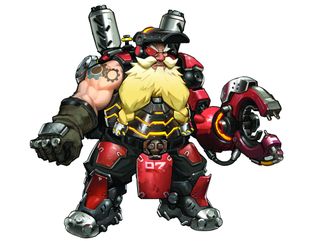
The controversy around Mercy’s skill threshold and her reworks is shaded, moreover, by the question of sexism. Judged in terms of representation, Overwatch has made many missteps: its female characters tend to be in line with stereotypes of beauty, while male characters are given more leeway in terms of age and body shape. But it is notable nonetheless for its gender-diverse roster, which appears to have attracted more women to the game: according to a July 2017 report from Quantic Foundry, Overwatch boasts around twice the average proportion of female players for a first-person shooter.
This has, in turn, made Overwatch a target for outrage about ‘politically correct’ representation—and Mercy’s design is a place where this dovetails with conversations about what constitutes ‘the right way to play’. For Nico Deyo, media critic and host of the Make it Sound Fiction podcast, Blizzard’s replacing of Resurrection with Valkyrie is less about balance and more appeasing those who view support roles generally as the province of women. Deyo argues that the view that accuracy is paramount often goes hand in hand with the stereotype that female players are inherently less able than men, fit only to play support characters in a perpetuation of the cliché of woman-as-caregiver. Hence the complaints from some male players when a female support is deemed to have too great an impact.
Juggling act
An elementary practical issue here is the difference between what telemetry or internal testing reveals about balance and what the community perceives to be the case. Ultimately, perhaps, there’s no bridging that gap: as Sirlin comments, “if a game were perfectly balanced by divine beings, the expected result would be that forums claim it’s really unbalanced.” But Deyo argues that Overwatch has become more vulnerable to the vagaries of perception as it has become more of an esport. “Streamers and pros have always dictated how the community ‘feels’ about something, especially in a culture of instant feedback. If streamers and pro players love playing a hero, often the ones that have the highest skill ‘ceiling’, then the community will broadly love that hero.”
Jared suggests that Blizzard has grown over-cautious of late. He argues that Overwatch’s more recent character additions and reworks are aimed at those inclined to rage at any hero with pronounced strengths or weaknesses, referencing a running joke in MOBAs that all characters will eventually gain self-heal and a dash ability because this makes them easier to balance. Westbrook Smith agrees that Blizzard is too ready to disempower heroes that require more thought in response to violent reactions. “I think it’s okay to have heroes that are more niche and situational. Often, I feel like Blizzard forgets this.”
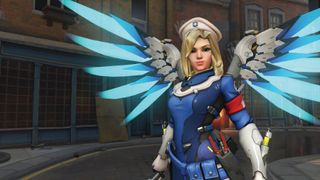
One way of working around louder, kill-oriented and more prejudiced players could be to actively champion heroes with abilities that go against the grain for shooters. Togrias points to the Specialist category in Overwatch’s MOBA stablemate Heroes of the Storm, used for wildcard characters who are cherished because they don’t fit in. Deyo feels, however, that Blizzard is comfortable with Overwatch’s current direction, and that the game’s engrossing breadth will only continue to narrow.
“I wanted the developers to fight harder for Symmetra, for Mercy, to understand why they were such good on-ramps for the community, for people who had less mechanical aim,” she says. “But they didn’t. Blizzard could do more to explain what they want Overwatch to be and they used to. But design is how developers express their principles, their vision of play and their ideology and we’ve been drifting farther into a sea that prizes a certain kind of play and a certain kind of player.”
Deyo adds lead hero designer Geoff Goodman and principal systems designers Scott Mercer have more to say on the game’s details than Jeff Kaplan, Overwatch’s creative director. “It feels like their background is more in line with traditional shooters in terms of feedback, skill and the ‘loop’ of Overwatch. What feels good to them feels very different from what feels good about the game to me, or what did in the past. Varied hero design that is innovating away from what we know of team shooters towards MOBA-esque team play, with an emphasis on fun that teaches skill, is what I’ve loved about Overwatch. I don’t know if we’re playing that game anymore.”
Most Popular

